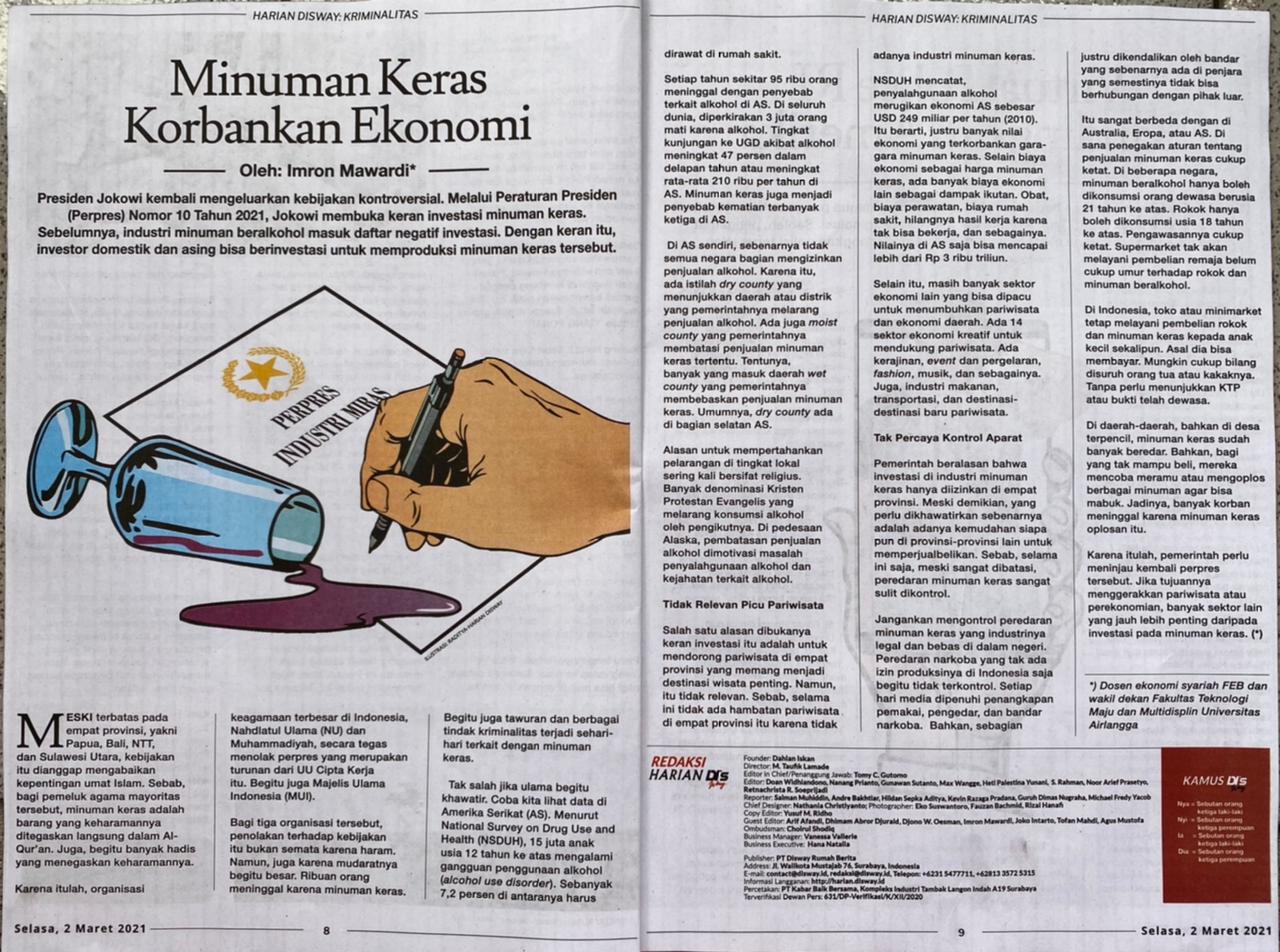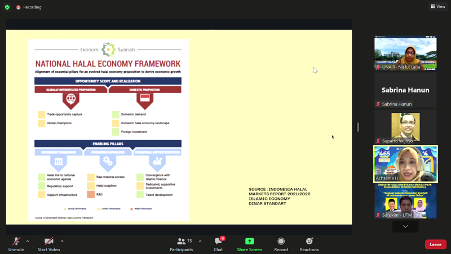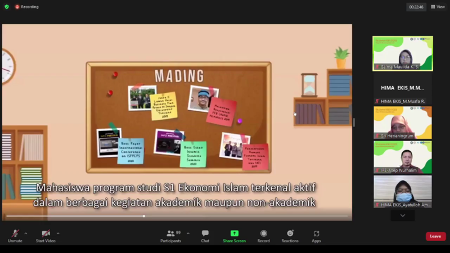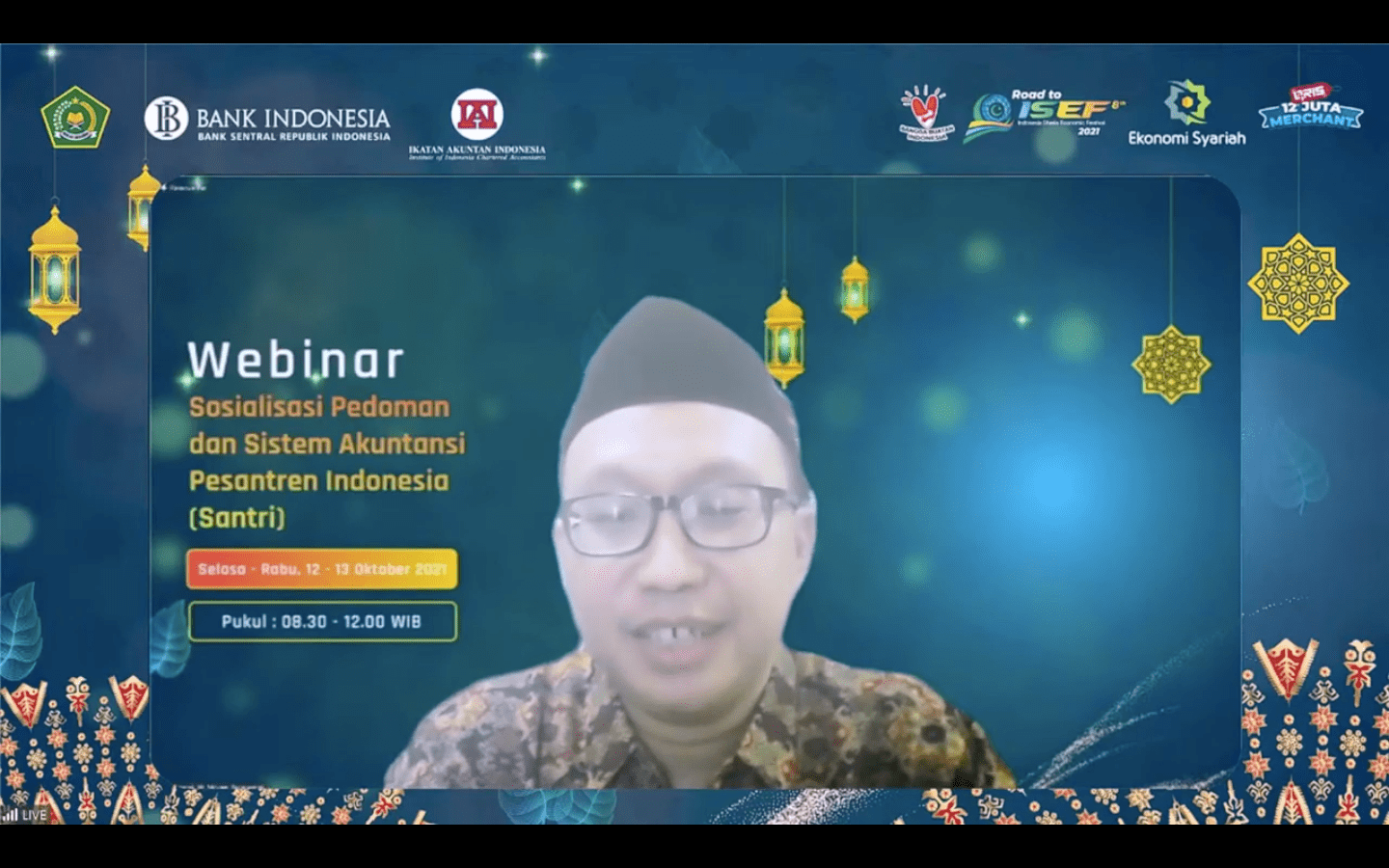By: Imron Mawardi
Islamic boarding schools are now the focus of many parties. Not only in terms of education, but also in terms of economic potential. The number of more than 28 thousand with millions of students is considered to have strategic value for driving the economy. Various government institutions are busy making Islamic boarding schools the object of their economic programs.
Bank Indonesia (BI), for example, has an Islamic Boarding School Economic Independence program. In fact, BI has a roadmap for 300 Islamic boarding schools 2017-2025. Starting from developing and restructuring the Islamic boarding school business model, financial standardization, to developing the Islamic boarding school virtual market platform. In fact, BI has created superior service centers and Islamic boarding school business holding centers at national and regional levels.
The Financial Services Authority (OJK) also has an economic development program for Islamic boarding schools and mosques through the Gress Program. Likewise, LPDB is now actively developing Islamic boarding schools and distributing revolving fund financing to Islamic boarding schools. In East Java, 23 Islamic boarding school cooperatives have received this financing.
In East Java, the Provincial Government has the One Pesantren One Product (OPOP) program. Governor Khofifah said OPOP is East Java's flagship program to improve the welfare and economy of the community. Currently, around 200 of the 6,017 Islamic boarding schools in this province have joined this program.
There is nothing wrong with using Islamic boarding schools to drive the economy. Islamic boarding schools are very important educational institutions in Indonesia. Appearing centuries ago (Muhtarom, 2005: 263-265), Islamic boarding schools continue to exist amidst rapid changes in times. In 2020, the Indonesian Ministry of Religion recorded that the number of Islamic boarding schools in Indonesia reached 28,194. A total of 6,017 of them are in East Java.
Many of these Islamic boarding schools are two to three centuries old and still exist today. Among them are PP Sidogiri Pasuruan which was founded in 1718, PP Miftahul Huda Malang 1768, PP Al-Hamdaniyah Sidoarjo and PP Darul Ulum Banyuanyar in 1787, and PP Termas Ponorogo in 1830.
One of the keys to the success of PP in maintaining its existence is carrying out a transformation of orientation to suit current developments and the needs of students (Dhofier, 2010). Currently, three Islamic boarding school models remain strong. Salaf Islamic boarding schools (traditional), Khalaf Islamic boarding schools (modern), and integrated or mixed Islamic boarding schools. In fact, the largest number are Salaf Islamic boarding schools (Muhtarom, 2005: 265).
One of the keys to success is the extraordinary flexibility of Islamic boarding schools. Following the demands of Islamic boarding school graduates, Islamic boarding schools try to equip students with knowledge, skills and technology (Isfannah, 2012). Another key to success is the Islamic boarding school's ability to provide education at low cost. This fits most students who come from lower middle class families, but want a good education.
For this purpose, many Islamic boarding schools explore their own sources of income to subsidize the Islamic boarding school's operational costs. One of them is by establishing an Islamic boarding school business unit. Many Islamic boarding schools in Indonesia have business units. There are various shapes and types. And most of them have not been managed professionally.
Some Islamic boarding school business units are owned by caregivers (kyai), although the proceeds are used to subsidize Islamic boarding school operations. Others are owned by foundations or Islamic boarding schools directly. In terms of scale, the majority are micro-small and medium-sized businesses. Most are managed like home businesses. A few of them are managed professionally and have a PT or CV business entity.
The key is to leave your ego behind
One of the advantages of Islamic boarding schools from an economic perspective is that they have a large captive market. Santri, santri families, alumni and their families are potential markets for Islamic boarding school businesses. Especially for large Islamic boarding schools with thousands of students.
There are dozens of Islamic boarding schools in East Java which have more than 10 thousand students. For example, PP Sunan Dradjat Lamongan, PP Al-Amien Sumenep, Gontor, Salafiyah Syafiiyah Situbondo, Lirboyo and Al-Falah Kediri, An-Nur Malang, and so on. The human resource potential is also very large, because many students can be equipped with business skills to manage.
With a large captive market, the economic value of Islamic boarding schools should be enjoyed by the Islamic boarding school itself. This is where the OPOP Program should be able to map and direct each Islamic boarding school to have superior products that are needed by Islamic boarding school stakeholders. Between Islamic boarding schools you can buy and sell each other's superior products, so that the Islamic boarding school market is controlled by the Islamic boarding school itself.
This concept has actually been initiated and implemented by BI East Java. A total of 17 large Islamic boarding schools in East Java were used as pilot projects. They are fostered and united in a network of Islamic boarding schools which are members of the Islamic Boarding School Secondary Cooperative. Its members are primary Islamic boarding school cooperatives.
Conceptually, the potential is extraordinary. For example, the need for student uniforms. The Islamic boarding school, which has 12 thousand students, every year accepts 4 thousand new students. There is a need for at least five uniforms per student, including sports uniforms. This means that the annual need reaches 20 thousand uniforms. If the price of one uniform is only IDR 50 thousand, then the value reaches IDR 1 billion.
With collaboration, there should be Islamic boarding schools that have superior convection businesses that produce uniforms. There are businesses that produce skullcaps, sarongs and sandals. Also consumer goods such as bath soap, washing soap, toothpaste and shampoo. Other Islamic boarding schools can produce agricultural goods, rice, vegetables, livestock and fisheries.
From rough calculations, the economic value of one Islamic boarding school per month reaches billions. Assuming the expenditure of one student is IDR 500 thousand a month, then the economic value of an Islamic boarding school with 10 thousand students reaches IDR 5 billion. In fact, in some Islamic boarding schools, students can spend IDR 1 million to IDR 2 million a month. You can calculate how much money circulates in Islamic boarding schools with almost a million students in East Java.
The key to successful Islamic boarding school collaboration in OPOP lies in the ego of each Islamic boarding school. Because, Islamic boarding schools are like small kingdoms. They are absorbed in their respective conditions, and find it difficult to hand over their market potential to other Islamic boarding schools.
For this reason, it is necessary to create Islamic boarding school groups in one business unit or holding. It can also be done with secondary cooperatives. Each Islamic boarding school sells its products and buys other products from jointly owned secondary cooperatives. That way, profits will later return to each Islamic boarding school based on their active transactions.
Apart from that, most Islamic boarding schools implement centralized leadership. It all depends on the kiyai. Or the gus-gus of the kiyai's son. Therefore, to be successful, all programs for Islamic boarding schools, including OPOP, must directly involve kiai or their sons. No matter how high their position, students will not dare to make decisions without the approval of the kiyai or their sons and daughters.
This article was first published in DI's way Daily 08/04/2021, with the title "Move the Economy with "One Pesantren One Product" Republished here with the author's permission for educational and da'wah purposes
























